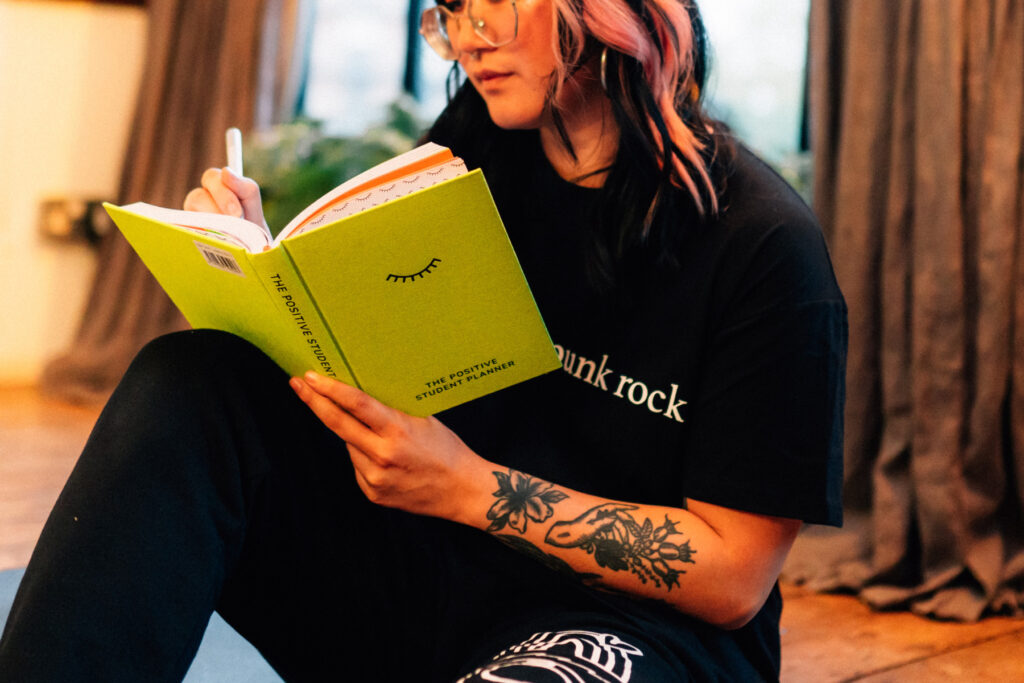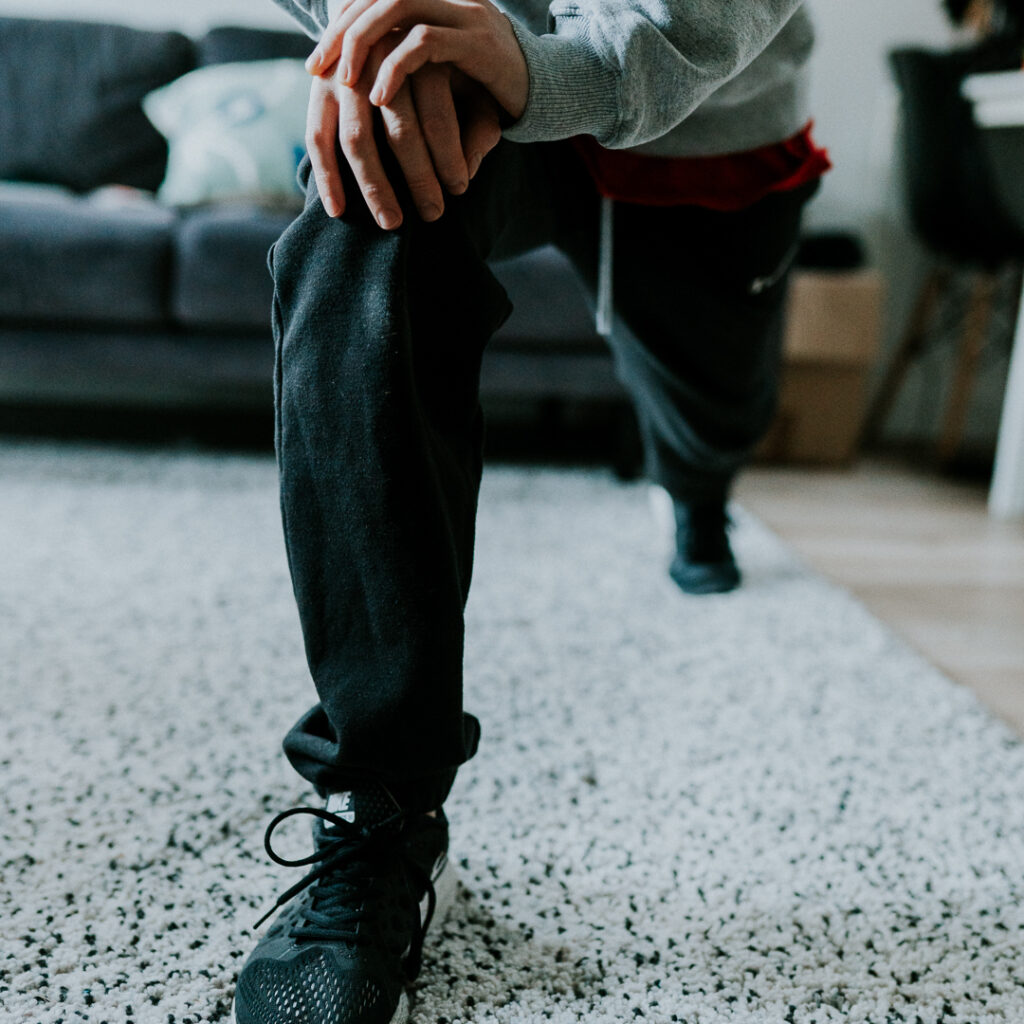If you think your child may be self-harming, you’re likely feeling a mix of confusing emotions; you might be worried for your child’s safety and wanting to help them, but also angry they would want to hurt themselves, and maybe also feeling guilty because you don’t know what could possibly have made them so upset. You’re not alone in feeling this way, but there are things you can do as a parent to support your child and find them the help that they need.
In this post, we’ll discuss some of the most pressing questions from parents.
Q: How do I know if my child is self-harming?
A: There are numerous potential signs that a person might be engaging in self-harm, but here’s a list of some of the most common ones we run across:
- Constantly wearing long sleeves, even in hot weather
- Their eating patterns are different from what they would usually be (for example, not getting food at lunchtime).
- Bandages or plasters, either on their body, in their bedroom or school bag
- Unexplained cuts or bruises on their body
- Being less communicative/responsive than usual
- Feeling tired all the time, or not sleeping
- Using very negative language about themselves
- Expressing feelings of failure, uselessness or hopelessness
- Looking physically anxious
- Skipping classes or other commitments
- Becoming evasive or dismissive when you ask how they are
- Engaging in harmful behaviours like smoking, or drinking
- Isolating themselves – distancing themselves from friends or family
- Being more aggressive or argumentative than usual
- Lack of interest in things they were once passionate about
- They’ve gone through a big and/or traumatic life event
Q: How do I talk about what I’m noticing with my child?
A: Often, our immediate reaction can be to focus on their injuries, or to try to make them feel better by explaining away their feelings, unconsciously diminishing them in our effort to make them less worrisome. Regardless of your intentions, actions like these can make your child lose trust in you, and make them less likely to confide in you about their feelings and worries. The most important thing you can do is validate your child’s feelings and experiences. When your child shares something with you, even something small, like a concern that they aren’t good enough at something, they are putting a huge amount of trust in you to respect their feelings. When this happens, try to:
- Take a breath, and just listen
- Let them say all they need to say, don’t interrupt, even to reassure them
- Express your desire to understand what they are feeling
- Avoid ‘you should’ statements — instead, focus on making sure they know you’re listening without judgement, and that you want to help
It’s likely the first time your child opens up to you won’t be a massive revelation, but it can be an opportunity to lay the foundation for trust and communication moving forward. You don’t have to be sure your child is self-harming to start the conversation, because the conversation should focus on how they are feeling, rather than on their injuries.
We also understand that starting that conversation can be difficult for both parties, so here are some potential conversation starters and things to consider (remember, it doesn’t have to be a huge scary conversation, just something that lets them know you care):
How are you feeling today?
I’ve noticed you [insert unusual behavior you’ve seen/haven’t been quite yourself], do you want to talk about anything?
I’ve noticed you’ve [insert observation here], and we don’t have to talk about it if you don’t want to, but I want you to know I’m not angry, I won’t judge you, and I will be here to help you when you feel comfortable sharing with me.
Are you feeling up to talking right now? (make sure it’s a good time for them)
Let them know they can write things down, as sometimes it’s hard to talk about such intense feelings
Let them know you just want to make sure they’re safe
Sometimes, just letting your child know that you’ve noticed something different going on with them, but you’re not angry — you just want to be there to support them — can be the encouragement they need to open up about what’s troubling them. The most important thing is to approach the conversation with an open mind; you don’t know or understand what’s going on in their head, but you’re there to support them, without judgement.
Notice with all of the above we focused on the person, not the injuries? That’s perhaps the most important bit. Self-harm is something they DO, but it’s just one small part of the bigger picture.
Q: Is there anything I shouldn’t say?
A: While there are no set rules for this kind of thing, there are some lines of questioning that can do more harm than good, which we’ll discuss below:
Anger:
It’s normal to feel angry in situations like these, because no one wants to believe that their child would willingly hurt themselves. However, self-harm is a coping strategy, not the real problem, so focusing your anger on your child’s injuries, or the fact that they are engaging in self-harm at all, can make them feel ashamed of their actions and their feelings, and can make them less-likely to be honest about their struggles in the future.
Shock or surprise:
Try to keep a level head as best you can, as appearing shocked can make your child feel abnormal when all they likely want to do is fit in. Show your concern, but remember that talking about self-harm is a big step — when in doubt, just listen.
Don’t take away utensils:
While your first reaction might be to take away the thing your child uses to self-harm, this can simply make your child go looking for other, potentially more harmful ways of coping. Not to mention, it won’t make them trust you any more than they already do. Remember, they’re using self-harm to cope, and taking that coping strategy away leaves them completely vulnerable to the issues they’re dealing with.
There are, of course, exceptions to this; if you feel your child may be a danger to others, then it may be safest to remove the equipment they’re using. Alternatively, you could offer to your child that, when they feel ready, they could give their equipment to you to dispose of, either when they’re ready to stop self-harming or if they want your help in using more positive coping strategies.
Don’t force them to talk to you:
Make sure they know you’ll be there when they want to talk, but don’t force them to tell you anything if they’re not ready. Prying can have the opposite reaction to what you want.
Don’t ask a million questions:
Similar to the last point, bombarding your child with personal questions can overwhelm them — remember, it’s a conversation, not an interrogation.
Don’t tell them not to do it:
It’s tempting to ask someone to promise not to self-harm, but it’s important to remember that they’re only doing it because it allows them to move forward in their life. Instead, if you feel they’re receptive in that moment, you could suggest they try different, more positive coping strategies next time. Self-harm is a learned behavior, but it is possible to learn new, positive behaviors that can replace it. You can find a huge list of them here on our website.
Don’t tell them to “smile!”:
The point of starting the conversation is to understand how they feel, and how you can support them. Telling them ‘it’ll be okay’ defeats the purpose of listening to them, because they don’t need to be made to feel happy, they need to be heard.
Don’t make it all about you:
This one is tied up in another misconception — that everyone who self-harms is also suicidal. It can be tempting in the moment to say things like “how do you think this makes me feel?”, or “how would your siblings feel if you weren’t here?”, or “your friends must be so worried about you!”. This only creates negativity, though, which isn’t helpful when someone is trying to be open and vulnerable with you. They can only get better when they are ready; if they stop self-harming for themselves, it will stick a heck of a lot better than if they do it out of guilt for someone else.
Remember, it can be really hard to stop relying on self-harm, especially if the person has been relying on self-harm to cope for a long time, so don’t be discouraged if nothing changes overnight. What we usually hear from students is that they wish someone would simply ask if they’re okay, like any normal person would. Try your best to be approachable, rather than critical, and let them talk at their own pace.
Q: Is it my fault?
A: No, it is not your fault. There are many possible reasons behind self-harm, and they differ from person to person, but here are some common reasons someone may self-harm:
Control — if they feel out of control in other areas, they may do this to have control over something
Release — self-harm may be their way of releasing tension, anger, sadness, frustration, or other negative emotions, especially when they have no other outlet
Expression — as a way to express emotional pain or turmoil
Attention — while self-harm is generally not only an attention-seeking action, it can be a way to ask for help, or for their problems to be taken seriously
Lack of self-worth — self-harm can serve as a sort of punishment when someone doesn’t feel ‘good enough’.
Numbness — when someone feels numb or disconnected, they may self-harm as a way to feel something, or to feel grounded.
We know we say this alot, but it’s so important to remember: self-harm is a coping strategy, not something they’re doing to get back at you, or anyone else in particular — this is about them and their struggle, whatever it may be, not about you. There is a bigger issue, whether it’s immediately obvious or not, and that should be the focus of the conversation, not how it affects others.
Q: I’ve started the conversation, but where do I go from here?
A: You don’t have to deal with this alone, and if you feel at a loss for what to do next, remember that there are countless resources set up to help with these exact situations. Here are a few things that may be helpful in making sure your child is safe, and in helping them implement positive coping strategies:
- Encourage them to make a self-harm safety plan: You can find instructions on how to build a plan, along with an easy-to-follow template, in this post on our website. A safety plan is designed to remind someone of their options for support and positive coping strategies when they feel like they’re a risk to themselves.
- Discuss downloading an app like Calm Harm: There are a bunch of apps out there designed to help someone resist the urge to self-harm. Calm Harm offers a bunch of different suggestions based on what someone needs at the moment, such as comfort, a distraction, a release, or just to express themself. Youper is an app that lets you talk to artificial intelligence (although it feels like a real human being), and helps you identify how you’re feeling. You can find an extensive list of resources like these here.
- Call a helpline: You don’t have to be in ‘crisis-mode’ to seek help, and there are helplines available for all kinds of situations — whether you’re calling for yourself or someone else. YoungMinds offers a helpline specifically for parents. You can find an extensive list of helplines here, on our website.
While it’s obviously your first thought to take care of your child in this situation, keep in mind that you are only able to support them so long as you yourself are healthy. Resources like the National Self Harm Network provide a space where anyone — friends, family, or concerned individuals — can seek support and discuss issues surrounding self-harm.
The most important thing to remember is that you don’t have to deal with this alone, and neither does your child. If you can look at starting the conversation as the start of a journey — to more honest discussions, to more positive coping strategies, and to greater trust — you’ll be better prepared to support your child through these confusing and frightening circumstances.
At the end of the day, the best thing you can do for your child is to listen to them, to trust them, and to believe them: validate their feelings even when they may seem inconsequential to you, acknowledge how hard those feelings are to express, and encourage them to seek out positive alternatives. Be there for them, even when they pull away, and let them know they are not alone.
If you found this post helpful, check out some more of our Straight Up Advice.
Show Me More!

























